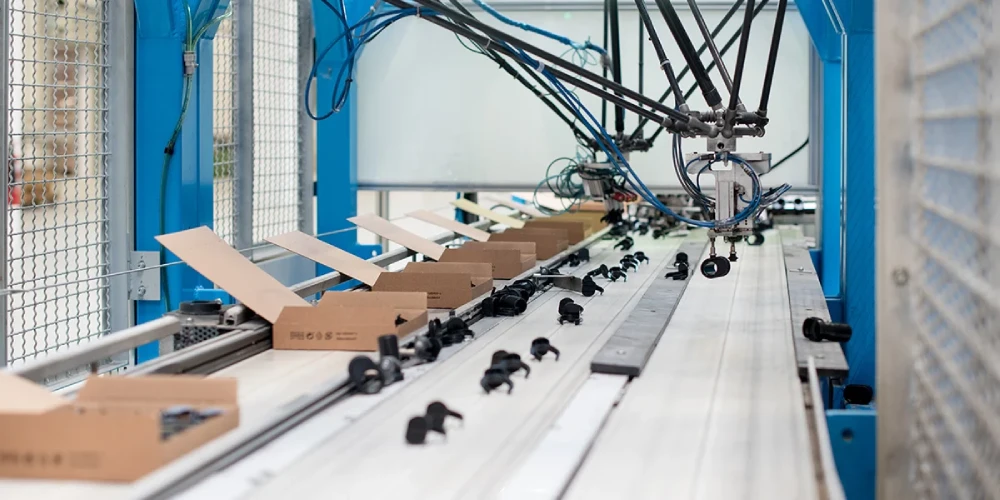Furniture Manufacturing: Custom Order Management
Deploying integrated ERP and MES systems to streamline custom furniture production, from design approval through material requirements planning to production scheduling, reducing lead times for made-to-order products.
Table of Contents
Toggle1. Industry Context & Customer Profile
Industry Segment: Custom Furniture Manufacturing
Vietnam has emerged as one of the leading furniture manufacturing and exporting countries globally, with the industry growing at an average annual rate of 8-10% over the past decade. While mass production remains common, a growing segment of Vietnamese furniture manufacturers focuses on custom, made-to-order products for both domestic luxury markets and international clients. This shift toward customization brings significant operational challenges that traditional manufacturing approaches struggle to address.
Typical Customer
Medium-sized furniture manufacturers with 50-300 employees, specializing in custom or semi-custom furniture for residential and commercial applications. These companies typically manage 200-500 custom orders simultaneously, with each order containing multiple items requiring specific materials, finishes, and dimensions. Production volumes range from single pieces for high-end residential clients to hundreds of coordinated items for hospitality projects or multi-unit developments.

Current Operational Environment
Most custom furniture manufacturers in Vietnam operate with fragmented systems that create significant inefficiencies:
- Separate design tools disconnected from production systems
- Manual transfer of design specifications to production documents
- Spreadsheet-based material requirements planning
- Paper drawings and cut lists moving through the factory
- Basic accounting systems disconnected from production
- Manual production scheduling based on experience rather than data
- Limited visibility into order status across departments
A production manager at a custom furniture factory in Binh Duong province described their current process: “Each custom order passes through multiple people who essentially recreate the information at each step. The designer creates beautiful renderings, then our engineers redraw everything for manufacturing, then production supervisors create their own lists and schedules. When changes happen, which is constantly, keeping everyone synchronized becomes nearly impossible.”
2. Critical Pain Points & Challenges
Operational Inefficiencies
The disconnected approach to custom order management creates substantial operational problems:
- Design-to-production information transfer creates errors and delays
- Material requirements calculations are time-consuming and error-prone
- Production bottlenecks occur due to lack of synchronized scheduling
- Engineers spend 30-40% of their time recreating or clarifying design information
- Revisions and change orders cause cascading disruptions throughout production
- Order status is difficult to track, requiring multiple phone calls and emails
- Material waste increases due to poorly coordinated production planning
The operations director at a high-end furniture manufacturer explained: “With custom furniture, the time from sale to manufacturing often exceeds the actual production time. We can build a custom dining table in three days, but it might take three weeks to get from the approved design to the shop floor because of all the manual steps required.”
Compliance & Quality Concerns
Beyond operational efficiency, custom furniture manufacturers face growing quality and compliance challenges:
- Material traceability requirements for exports to regulated markets
- Sustainability certification documentation for forestry products
- Accurate record-keeping of design approvals and change authorizations
- Quality verification steps that must align with custom specifications
- Dimensional and finish accuracy matching customer expectations
These requirements become especially challenging with frequent design changes. One quality manager noted: “When a customer modifies dimensions or materials after initial approval, those changes need to flow through every document and process step. With our current system, it’s too easy for production to work from outdated specifications.”
Cost Pressures
The financial impact of inefficient custom order management extends throughout operations:
- Administrative overhead representing 15-20% of overall costs
- Material waste of 10-15% due to poor planning and coordination
- Overtime costs to compensate for inefficient scheduling
- Lost revenue from capacity underutilization
- Rush charges for expedited material deliveries
- Warranty claims from specification errors
Competitive Disadvantages
Manufacturers struggling with custom order management face significant competitive disadvantages:
- Inability to provide accurate delivery date commitments
- Longer lead times reducing market appeal
- Higher prices to compensate for operational inefficiencies
- Limited ability to accommodate last-minute customer changes
- Difficulty scaling custom business profitably

3. DxFactory Solution Overview
Primary DxFactory Components
The DxFactory Custom Order Management solution integrates two complementary systems:
- Enterprise Resource Planning (ERP) – Core system managing customer orders, materials, and financial data
- Manufacturing Execution System (MES) – Shop floor system controlling production activities and monitoring progress
Key Functionalities
The integrated solution provides comprehensive order management capabilities:
- Digital Design Integration – Direct transfer of design data to manufacturing systems
- Automated BOM Generation – Automatic creation of bills of materials from designs
- Dynamic Material Planning – Real-time calculation of material requirements across all orders
- Visual Production Scheduling – Graphical tools for optimizing production sequences
- Digital Work Instructions – Electronic delivery of production information to workstations
- Real-time Order Tracking – Complete visibility into order status throughout the process
- Change Order Management – Controlled processes for implementing and communicating revisions
- Customer Portal – Online access for customers to view order status and approve designs
- Production Analytics – Data-driven insights for continuous process improvement
Integration Approach
The DxFactory solution integrates with existing manufacturing environments through:
- Compatibility with common design software (AutoCAD, SketchUp, etc.)
- Connection with existing accounting and CRM systems
- Digital displays and tablets for shop floor information delivery
- Mobile applications for production supervision and tracking
- Email and messaging integration for automated customer communications
Technical Requirements
Implementation requires:
- Server infrastructure (on-premises or cloud-based)
- Network connectivity throughout design and production facilities
- Digital displays or tablets for production information
- Barcode infrastructure for work order tracking
- Integration middleware for connecting with design software
4. Implementation Roadmap
Phase 1: Assessment & Planning (3-5 weeks)
- Analysis of current order processing workflow
- Documentation of information flow from design to delivery
- Identification of key bottlenecks and error sources
- Material planning process evaluation
- Change management assessment
- Data standardization planning
- Definition of success metrics and targets
Phase 2: Deployment & Configuration (6-10 weeks)
- Installation and configuration of ERP and MES systems
- Setup of product and material master data
- Configuration of custom furniture specification parameters
- Implementation of design software integration
- Development of production dashboards and reports
- Configuration of customer communication templates
- Data migration from legacy systems

Phase 3: Training & Adoption (3-5 weeks)
- Training of design and engineering staff
- Production planning and scheduling training
- Shop floor operator training on digital work instructions
- Management dashboard utilization training
- Customer service training for order tracking
- Limited pilot implementation with selected orders
- Process refinement based on initial feedback
Phase 4: Optimization & Expansion (Ongoing)
- Performance review after first month of operation
- Workflow refinement based on actual usage patterns
- Implementation of additional automation opportunities
- Development of advanced analytics for business intelligence
- Integration with supplier systems for materials planning
- Expansion of customer portal capabilities
5. Value Delivery & ROI Analysis
Immediate Benefits
Within the first three months of implementation, manufacturers typically experience:
- 50-60% reduction in design-to-production documentation time
- 70% decrease in specification errors
- 40-50% improvement in order status visibility
- 25-30% reduction in administrative overhead for order processing
- 90% faster response to customer inquiries about order status
A design manager at an early adopter shared, “The transformation was dramatic. We went from spending hours recreating manufacturing documents from design files to simply approving automatically generated production specifications. This change alone freed up two full-time staff to focus on new designs instead of paperwork.”
Operational Improvements
Measured improvements after 6-12 months include:
- Average lead time for custom orders reduced by 30-40%
- On-time delivery performance improved from typical 70% to 90%+
- Material waste reduced by 8-12%
- Production capacity increased by 15-20% without additional equipment
- Change order processing time reduced by 60-70%
Financial Impact
A typical medium-sized custom furniture manufacturer can expect:
- Return on investment within 9-15 months
- Administrative cost reduction of $50,000-$150,000 annually
- Material savings of $30,000-$100,000 annually
- Increased revenue of 10-15% through improved capacity utilization
- Reduction in warranty claims valued at $20,000-$50,000 annually
Competitive Advantage
Manufacturers implementing the DxFactory custom order management solution gain significant market advantages:
- Ability to offer shorter lead times for custom products
- Enhanced capability to accommodate customer changes
- Improved accuracy of delivery date commitments
- Capacity to handle more complex customization options
- Data-driven operations enabling continuous improvement
Related Articles:




